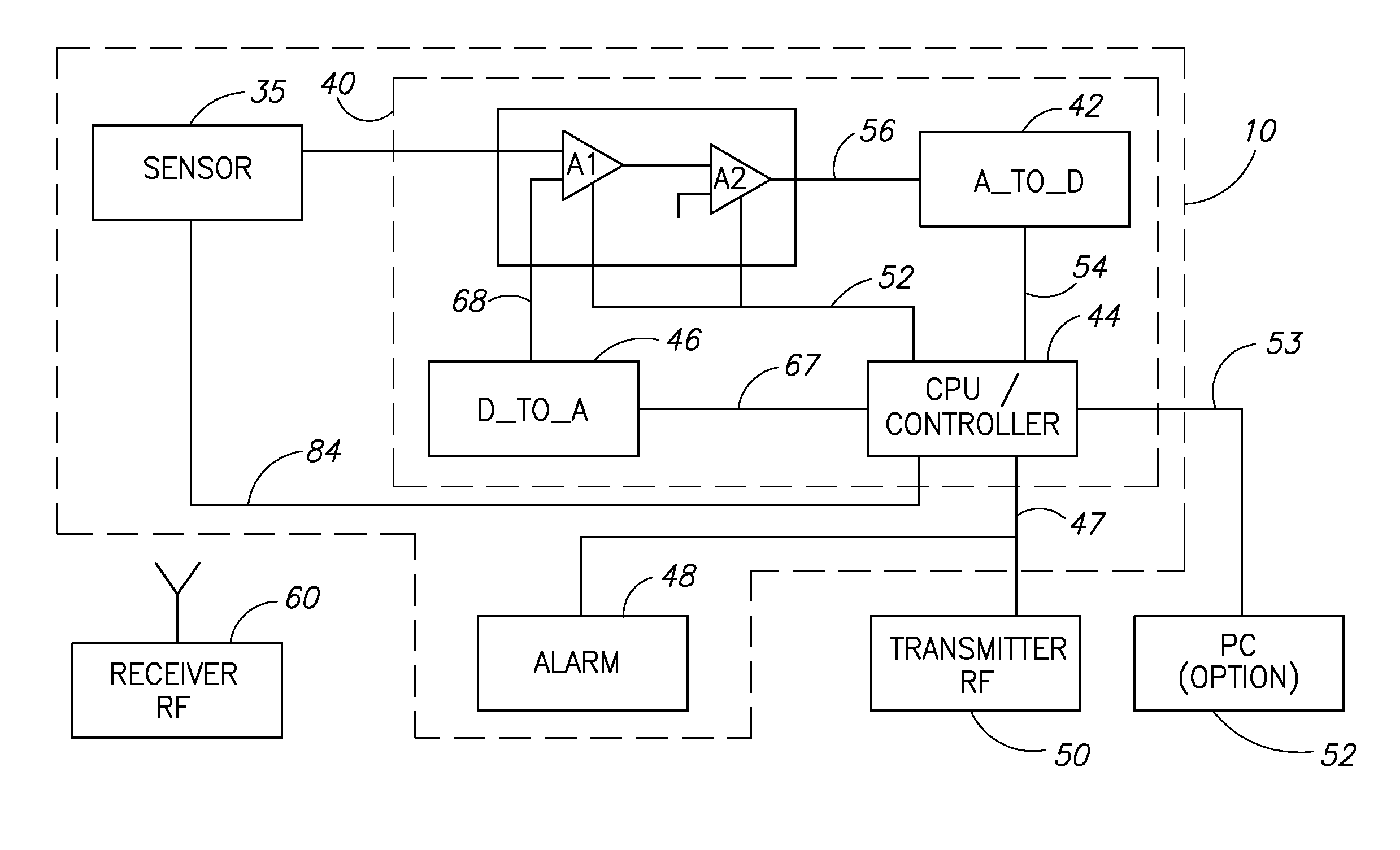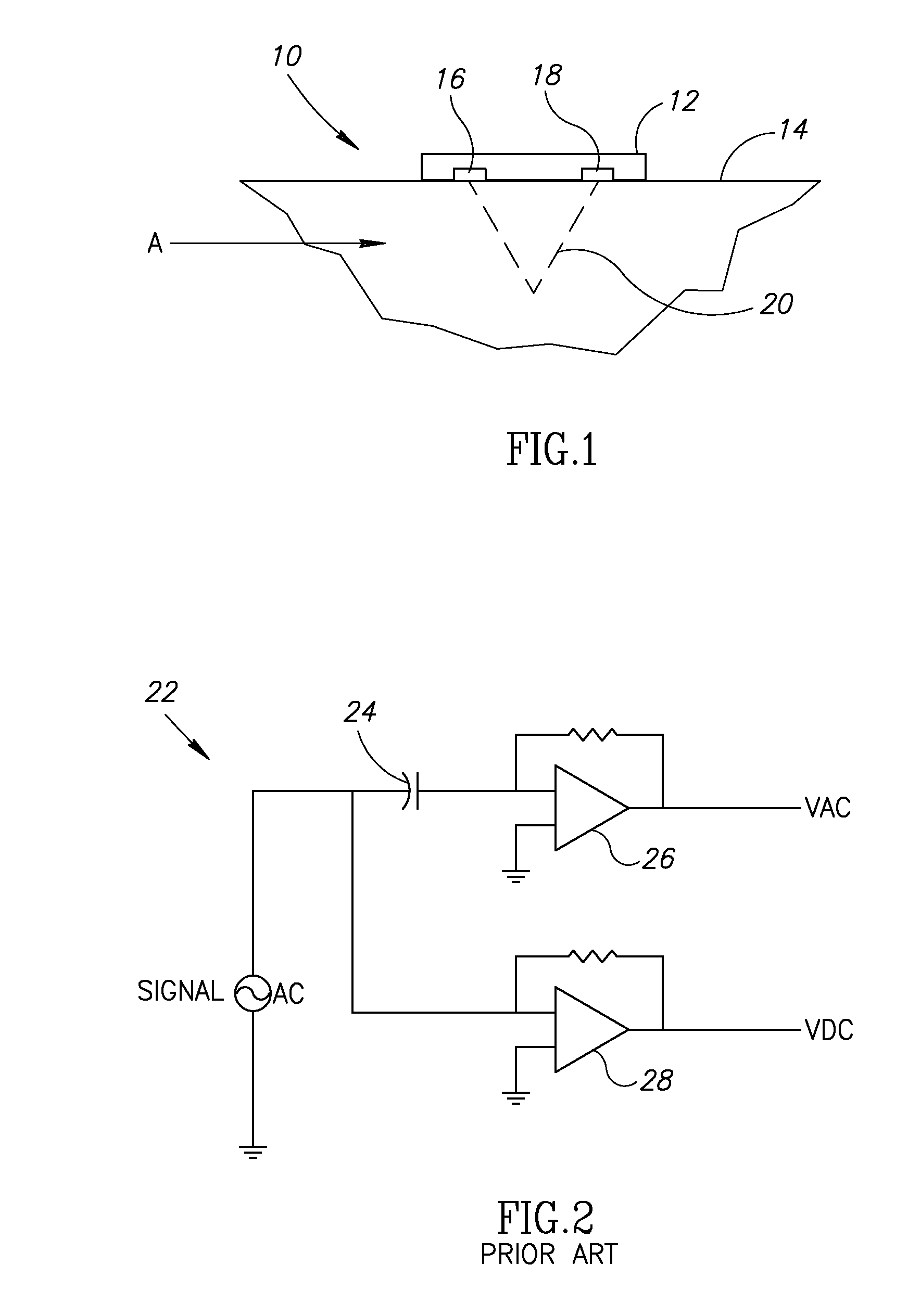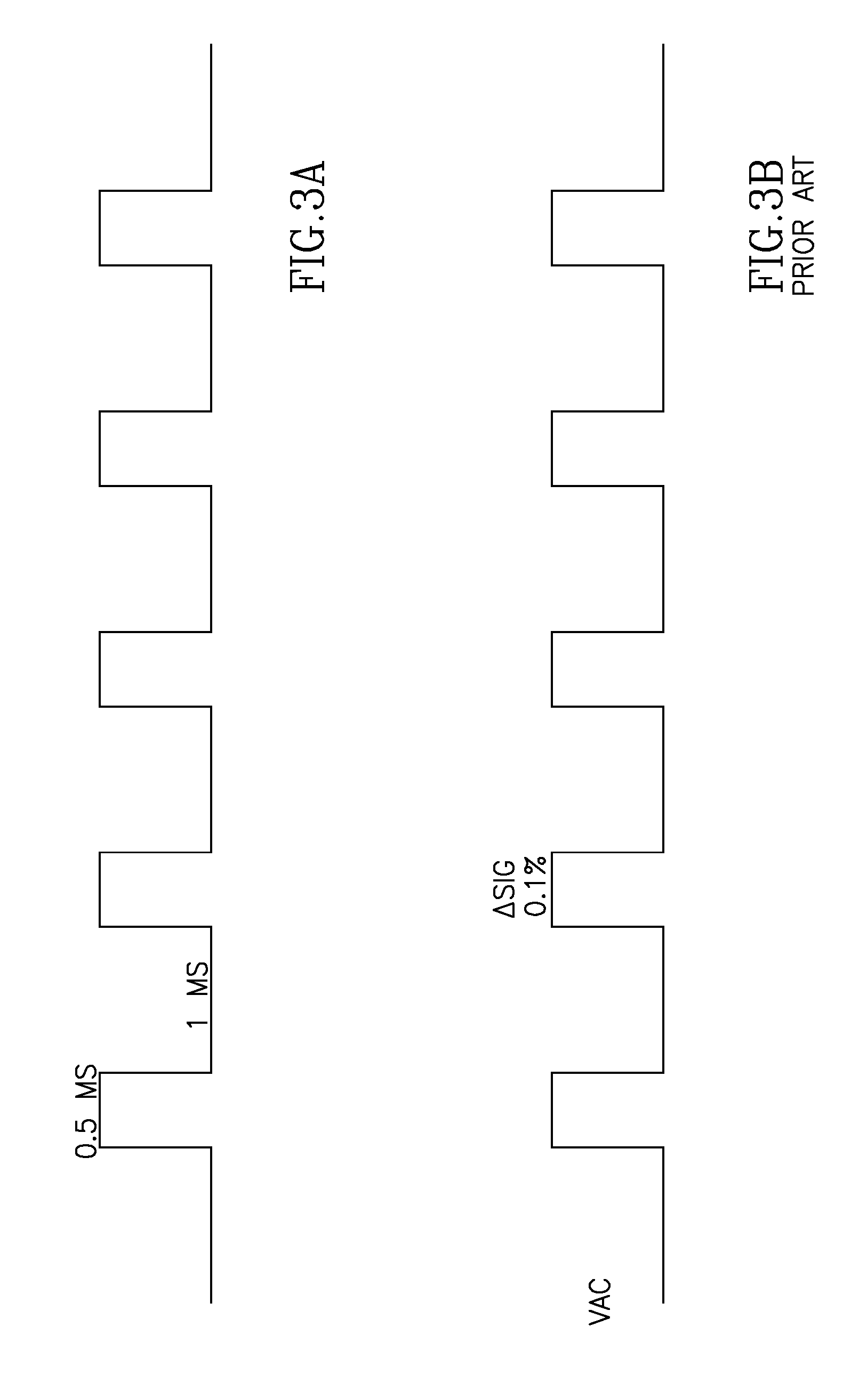Physiological stress detector device and system
a detector device and physiological stress technology, applied in the field of instruments, can solve the problems of infant death, inability to give caregivers the advance warning necessary, infants in the first year of life are susceptible to breathing disturbances (apnea) and respiratory distress, etc., and achieve the effect of accurate readings
- Summary
- Abstract
- Description
- Claims
- Application Information
AI Technical Summary
Benefits of technology
Problems solved by technology
Method used
Image
Examples
Embodiment Construction
[0066] The following description presents a detailed construction of a physiological stress detector device adapted for use in monitoring arterial oxygen levels. In this particular application, the reflective oximetry method uses light wavelengths in the red and infrared ranges, since these are most suitable for detecting oxygen saturation in hemoglobin. As will be understood by those skilled in the art, particular design features used for this application can be varied for different applications. For example, in an application for monitoring jaundice through billirubin levels, other suitable, light wavelengths would be used. Therefore, the light wavelengths discussed in the following description are not intended to limit the scope of the present invention, and are to be understood as pertaining to the subject example only.
[0067] Referring now to FIG. 1, there is shown a preferred embodiment of a physiological stress detector device 10 constructed and operated in accordance with th...
PUM
 Login to View More
Login to View More Abstract
Description
Claims
Application Information
 Login to View More
Login to View More - R&D
- Intellectual Property
- Life Sciences
- Materials
- Tech Scout
- Unparalleled Data Quality
- Higher Quality Content
- 60% Fewer Hallucinations
Browse by: Latest US Patents, China's latest patents, Technical Efficacy Thesaurus, Application Domain, Technology Topic, Popular Technical Reports.
© 2025 PatSnap. All rights reserved.Legal|Privacy policy|Modern Slavery Act Transparency Statement|Sitemap|About US| Contact US: help@patsnap.com



